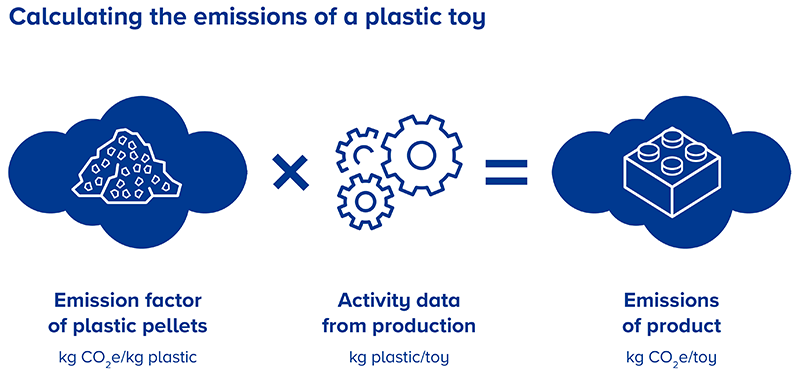Emission factors
Emission factors definition
Emission factors (EFs) provide a valid estimate of the environmental impact of different materials, products, services, and processes. They are a key part of calculating a carbon footprint.
EFs are generally converted to a unit known as carbon dioxide equivalents, or CO2e. This means the resulting calculations account for more greenhouse gases (GHGs) than just carbon dioxide (CO2), for example methane and nitrous oxide. CO2e are measured by mass and include the impact of all other GHGs with their relative global warming potentials (GWP) compared to CO2.
EFs refer to the amount of CO2e that are emitted into the atmosphere per a specific reference unit. Emission factors are generally expressed as the kilograms of CO2e per unit. This reference unit could represent the weight, volume, distance, or duration of the activity. For example, an EF could be expressed as the number of kilograms of CO2e emitted per kilowatt hour of natural gas used, or kgCO2e / kWh.
How are emission factors calculated?
Emission factors are determined in a variety of ways, ranging from theoretical modelling to testing at the source of the emission. This variability means that different EFs can vary greatly, even for the same product or activity. In many cases, EFs represent the average of all the available high-quality data.
Emission factor databases
EFs can be accessed from a range of databases. Common open-source databases are provided by environmental agencies like BEIS from the UK or independent bodies like the IPCC. Examples of commercial databases include Ecoinvent and Agri-footprint, while other sources include research papers and some industry-specific databases like Ökobaudat in Germany.
How are emission factors used?
A product’s emissions are calculated by multiplying the emission factor by the relevant activity data, such as the amount, distance, duration, and other relevant aspects of the input materials and processes. At a minimum, the reporting company will always have to provide activity data to calculate a carbon footprint.

Limitations of emission factors
Even for the same material, emission factors can differ in aspects like the research methodologies employed, regions covered, and production processes and time frames assessed. Therefore, data quality can vary and be less relevant to the actual product. Factors such as the region and the reference unit help determine the best match.
EFs are inherently conservative estimates because they account for all the variations within a product category. In some cases, the numbers come from a generic database or represent a market average with little connection to the product in question. Therefore, replacing EFs in your calculations with primary data specific to the actual product will always be more accurate and will likely even result in a lower target for emissions reduction.
Replacing EFs with primary data also means that subsequent emissions reduction efforts can be much more focused. By using the closest possible estimation of the actual emissions, carbon “hotspots” can be identified and reduced, for example by replacing a raw material or increasing the efficiency of a process.
Learn more about emission factors in our e-book.
